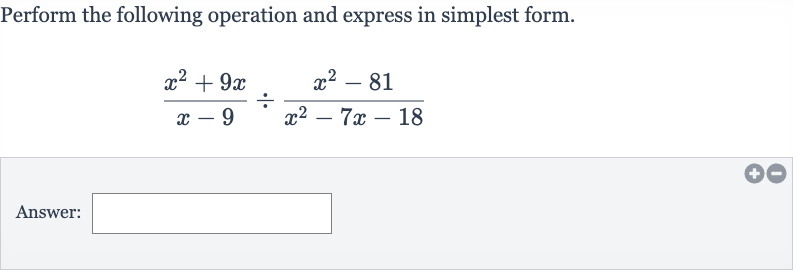Full solution
Q. Perform the following operation and express in simplest form.Answer:
- Identify and Rewrite Division: Identify the given expression and rewrite the division as multiplication by the reciprocal.The expression is , which can be rewritten as .
- Factor Numerator and Denominator: Factor the numerator and denominator of both fractions where possible.The numerator can be factored as .The denominator can be factored as because it is a difference of squares.The denominator can be factored as because it is a quadratic expression.
- Rewrite with Factored Terms: Rewrite the expression with the factored terms.The expression becomes .
- Cancel Common Factors: Cancel out common factors from the numerator and denominator.The factors and cancel out from the numerator and denominator.The expression simplifies to .
- Multiply Remaining Factors: Multiply the remaining factors.Multiplying by gives .
- Check for Further Simplification: Check for any further simplification. The expression cannot be factored further, so this is the simplest form.
More problems from Operations with rational exponents
QuestionGet tutor help
QuestionGet tutor help

